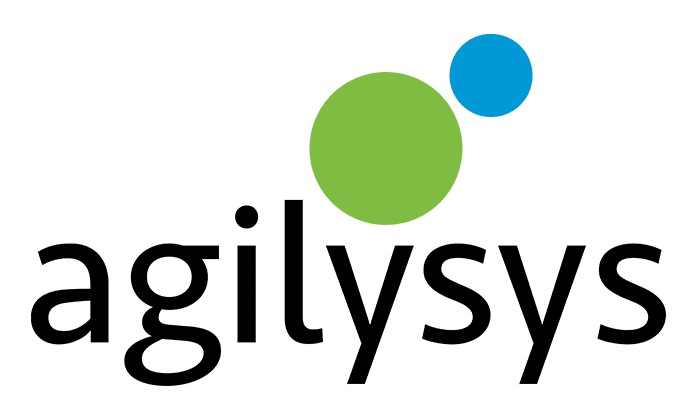
- Solutions
- Food & Beverage Ecosystem
Food & Beverage Ecosystem
Optimizing food & beverage operations and profitability demands a flexible, enterprise-class point-of-sale system. Is yours up to the task?
Go- Hospitality & Leisure Ecosystem
Hospitality & Leisure Ecosystem
From an individual location to an enterprise chain, get the most modern, mobile solution for managing your hospitality business
Go
- Inventory & Procurement Ecosystem
Inventory & Procurement Ecosystem
Designed to optimize foodservice and retail inventory and procurement operations for hotels, resorts, universities, restaurants and others.
Go
- Professional Services
Professional Services
Hospitality businesses are global, 24/7 operations with complex technology demands. You don’t have to go it alone.
Go
- Solution Studios
- Hotels
Hotels
Whether you operate a single boutique location or a large hotel chain, there’s an Agilysys hotel solution for you.
Go- Resorts
Resorts
Whether you operate a single boutique location or a large complex resort, your property is a unique operation that requires robust solutions supported by an experienced technology partner
Go
- Casinos
Casinos
You’re more than a gaming operation. You’re a full-service casino resort property and success isn’t about playing the odds, it’s about making the most of every revenue opportunity.
Go
- Tribal Gaming
Tribal Gaming
A leader in casino hospitality management solutions who respects the sovereignty of your nation.
Go
- Cruise Lines
Cruise Lines
Smooth seas ahead: technology solutions from Agilysys, a leader in cruise management systems.
Go
- Higher Education
- Corporate Dining
Corporate Dining
Identify emerging dining trends while aligning coverage with demand and capturing more revenue.
Go
- Healthcare
Healthcare
Delight patients & visitors, retain staff and grow margins with a suite of hospitality solutions for healthcare environments.
Go
- Life Plan Communities
- Foodservice Management
Foodservice Management
End-to-end foodservice management software solutions for optimum productivity and profitability.
Go
- Stadiums
- Restaurants
- Airports
Airports
Optimizing dozens of food & beverage outlets throughout your facility demands world-class POS performance combined with real-time operating insights.
Go
- Resorts
- Resources
- Articles
Articles
Access our library and read about the latest in emerging technology and other hospitality trends. Find tips and insights on accelerating business growth and improving guest satisfaction.
Go- Customer Stories
Customer Stories
Learn why so many businesses, small and large, partner with Agilysys for their hospitality technology needs.
Go
- Customer Videos
Customer Videos
Watch and learn what Agilysys customers have to say about their experiences with our solutions.
Go
- Product Resources
Product Resources
An in-depth collection of product information and datasheets. Read about the latest in hospitality technology features designed to solve the challenges faced by hospitality professionals around the globe.
Go
- Product Showcase
Product Showcase
Hear from industry professionals about the latest advancements, including tips and tricks, in hospitality and emerging technologies. Check out the library of demo videos and webinar recordings.
Go
- Webinars
Webinars
Watch and learn about the latest in successful technology trends and hear from hospitality professionals in this selection of interactive videos.
Go
- Industry Reports
Industry Reports
Important research and studies from across the hospitality industry. Find out what thought leaders are saying.
Go
- Customer Stories
- Company
- Leadership
- Solution Partners
Solution Partners
Agilysys has a broad collection of partners and APIs to help you assemble the perfect solution for you.
Go
- Our Customers
Our Customers
Discover how Agilysys customers like you are using our solutions to improve their business and guest experience.
Go
- Investor Relations
- News
- Events
Events
With the Agilysys commitment to 100% Hospitality solutions, we take industry events and conferences seriously. Please see where you can find Agilysys to learn more.
Go
- Career
- FAQS
FAQS
Go
- Solution Partners
- Support
- Contact Support
- Microsoft Patch Testing
Microsoft Patch Testing
See what Microsoft products and versions are currently support by Agilysys.
Go
- Payment Center
- RMA Requests
- Supply Order
Supply Order
Go
- Hospitality IQ
Hospitality IQ
Go
- Knowledge Center
Knowledge Center
Go
- Microsoft Patch Testing
- Blogs
- MyAgilysys
-
 Get a Demo
Get a Demo 877 369 6208
877 369 6208
×Home
☰- Explore
WHAT'S THE BUZZ IN HOSPITALITY?
Maximizing Hotel Total Profitability: Transitioning from RevPAR to Revenue per Guest
Understanding the Shift:
In an era where guest experience and satisfaction play pivotal roles in a hotel or resort's success, the hospitality industry would be well-advised to invest in a concerted effort toward shifting how it measures financial health from traditional metrics like Revenue Per Available Room (RevPAR) to a more comprehensive metric known as Revenue Per Available Guest (RevPAG). This transition signifies a move beyond room-centric revenue evaluation to a holistic approach that includes all guest expenditures. Examining this shift is crucial for hotels and resorts aiming not only to measure their total profitability accurately but also to enhance it by keeping guests on their properties and encouraging additional spending.
This article delves into the shift from RevPAR to RevPAG and explores how hotels and resorts can create a "sticky" environment to encourage guests to spend more on property.

RevPAR Overview
Revenue Per Available Room (RevPAR) has long been the standard metric for evaluating a hotel's financial performance. It is calculated by dividing total room revenue by the number of available rooms over a given period.
Limitations of RevPAR
While RevPAR provides a useful snapshot of room revenue, it doesn't account for other revenue streams such as dining, spa services, or recreational activities. As the industry evolves, there's a need for a more holistic metric that considers the total guest spend.
Introducing RevPAG: A Holistic Approach to Revenue Evaluation
Beyond Room Revenue
Revenue Per Available Guest (RevPAG) addresses the limitations of RevPAR by encompassing revenue generated from all guest expenditures, not just room revenue. This includes on-site dining, entertainment, spa services, and other amenities, providing a more nuanced understanding of a hotel's financial performance.
Strategies for Transitioning to RevPAG
1. Integrated Revenue Management Systems:
Investing in integrated systems that consolidate data from various departments facilitates a comprehensive analysis of revenue streams. This integration ensures that non-room revenue is factored into the overall revenue management strategy, empowering hoteliers to make informed decisions regarding pricing, promotions, and service offerings to maximize RevPAG.
2. Personalized Guest Experiences:
Building a personalized approach to guest services involves understanding individual preferences and tailoring services accordingly. Leveraging guest data for personalization not only enhances satisfaction but also encourages additional spending on personalized services.
Hospitality & Leisure Ecosystem
From an individual location to an enterprise chain, get the most modern, comprehensive property management solutions for managing your hospitality business.

3. Dynamic Pricing Models:
Embracing dynamic pricing models beyond room rates allows hotels to optimize pricing for ancillary services based on demand, seasonality, and specific guest profiles. This flexibility ensures that prices are aligned with the perceived value of these services.
Creating a "Sticky" Environment for Increased On-Site Spending
1. Curated On-Site Activities:
Hotels and resorts can curate a variety of on-site activities such as guided tours, workshops, or cultural events to keep guests engaged and entertained without leaving the property. By offering diverse experiences on property, hoteliers can encourage guests to extend their stay and explore more of what the hotel or resort has to offer.
2. Culinary Excellence:
Elevating the dining experience is a powerful tool for increasing on-site spending. Investing in quality ingredients, diverse culinary options, and themed dining events can turn dining into an experience, prompting guests to dine on-site instead of seeking alternatives.
3. Wellness and Recreation:
State-of-the-art wellness and recreation activities contribute to the "sticky" factor, providing guests with ample reasons to stay on the property for leisure and relaxation. From spas to fitness centers, golf outings and other outdoor activities, these activities enhance the overall guest experience.
4. Loyalty Programs:
Implementing or enhancing loyalty programs can be a key driver for on-site spending. By offering exclusive perks, discounts, or access to premium services, hotels and resorts can incentivize guests to choose on-property options, fostering loyalty and repeat business.

Food & Beverage Ecosystem
Optimizing food & beverage operations and profitability demands a flexible, enterprise class point-of-sale system. Is yours up to the task?
5. Seamless Technology Integration:
Leveraging technology for a seamless guest experience is essential. From streamlined check-ins to in-room automation, implementing user-friendly mobile apps that provide easy access to on-site services enhances guest satisfaction and increases the likelihood of additional spending.
In the ever-evolving landscape of the hospitality industry, transitioning from RevPAR to RevPAG is not just a trend; it's a strategic imperative. Hotels and resorts that embrace this shift are better positioned to gauge their total profitability accurately and implement targeted strategies to maximize revenue. Creating a "sticky" environment, where guests are enticed to stay on the property and engage in on-site activities, is a multifaceted approach that involves personalized experiences, advanced technology, and strategic offerings. By focusing on RevPAG and fostering on-site spending, hotels can not only adapt to changing industry dynamics but also thrive in an increasingly competitive market, ensuring sustained success in the long run.

2026 Hospitality Industry Conferences You Shouldn't Miss
Read More
The 2025 Global Hospitality Study
Download Study
The Guest Economy: Top 5 Hospitality Technology Predictions for 2026
Learn MoreCategories
- Contact Support
- Leadership
- Articles
- Hotels
- Food & Beverage Ecosystem




